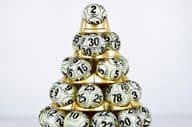Stunning April Celestial Shows Over Dubai

Spectacular Celestial Phenomena Over Dubai: Micro Pink Moon and Lyrids Meteor Shower in April
The skies of the United Arab Emirates are often adorned with human-made light shows: drone displays, fireworks, and other modern visual installations. However, from time to time, nature itself delights residents with stunning performances—such as April's Pink Moon and the Lyrids meteor shower, both of which can be observed with the naked eye from desert or mountainous regions.
April 13: The Pink Moon Rises—but It's Not Pink
On April 13, at 7:08 PM local time, the Pink Moon rises and sets the next morning at 5:56 AM. Although the name suggests vibrant colors, the moon does not actually turn pink during this time. The term 'Pink Moon' traces its origins to Native American traditions in North America and refers to the first full moon of spring—the period when the first spring flowers, such as the pink phlox, bloom.
This year's Pink Moon is special as it appears as a micro full moon—meaning the moon is at its farthest point from Earth (apogee), making it appear smaller and dimmer than usual.
April 21–22: Lyrids Meteor Shower—Spectacular Shooting Stars at Dawn
A few days after the Pink Moon, another celestial marvel occurs: the Lyrids meteor shower reaches its peak from the night of April 21 into the morning of April 22. The best time for observation will be between 2 AM and 5 AM, during which you can see 10–20 meteors per hour—provided you choose a location far from city lights.
Popular locations include Al Qudra, Al Quaa Desert, Jebel Jais, Jebel Hafeet, or Al Razeen Desert—all ideal for peaceful observation free from urban light pollution.
What Causes Meteor Showers?
Meteor showers are remnants from the formation of our solar system 4.6 billion years ago. When a comet approaches the Sun, it leaves behind a trail of debris composed of tiny rocks, ice, or even metal. As Earth passes through these debris fields, the particles burn up upon entering the atmosphere—creating the bright 'shooting stars.'
Meteors radiate from a single point in the sky—this is how meteor showers get their names, such as the Lyrids being named after the Lyra constellation. Interestingly, while meteor showers occur throughout the year, the most intense periods are in winter when Earth passes through denser comet debris fields.
Tips for Meteor Shower Observation
When observing celestial sights, it's wise to follow a few tips:
Eye Adaptation: Allow at least 30 minutes for your eyes to adjust to the dark.
Avoiding Lights: Avoid phone screens and other light sources to preserve night vision.
Moon Phase: New moon periods are best since a bright moon often obscures fainter meteors.
Equipment: No telescopes or binoculars are needed, as meteors move too quickly—the naked eye is the best tool.
Preparations: Dress in layers, bring drinks and food, and inform someone of your precise location if venturing to remote areas.
When Will There Be More Meteor Showers in 2025?
If you wish to return under the stars after April, note the following dates:
Eta Aquariids: May 5–6—ideal for early risers
Perseids: August—up to 100–150 meteors per hour
Orionids: October—15–25 meteors per hour
Leonids: November—10–20 meteors per hour
Geminids: December—up to 150–200 meteors per hour
Summary
April will be a special month for sky gazers in the UAE. The micro Pink Moon and Lyrids meteor shower offer an opportunity to pause and focus on nature's spectacle rather than modern technology. Whether it's a moon observation during an evening walk or a dawn desert adventure, these experiences will make the onset of spring memorable. Don't miss out—and remember to look up.
(The article is based on recommendations from the Dubai Astronomy Group (DAG).)
If you find any errors on this page, please let us know via email.


